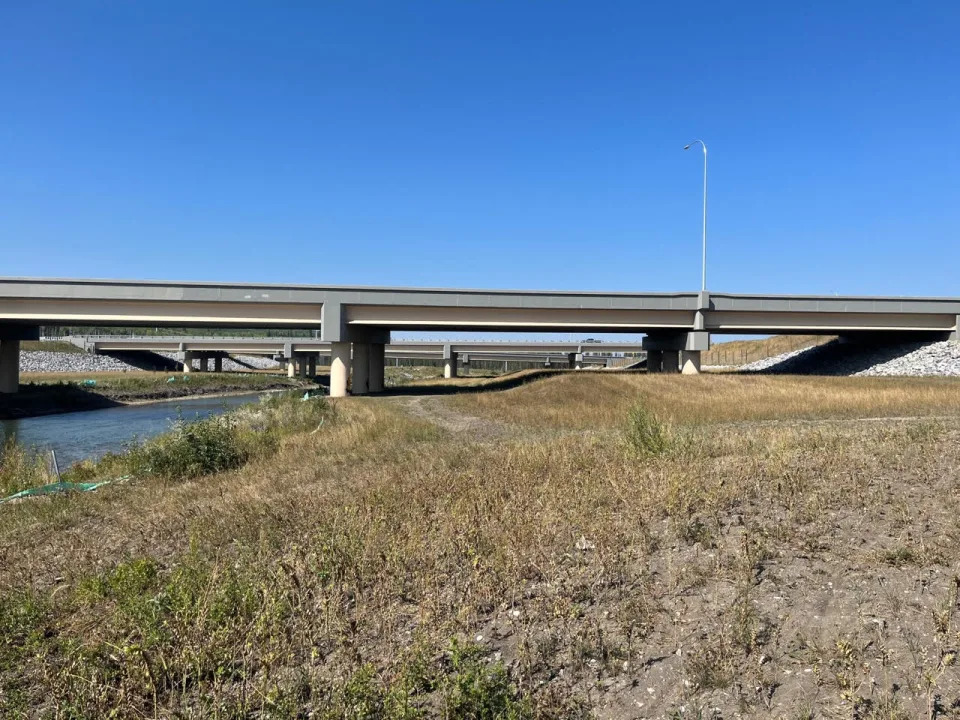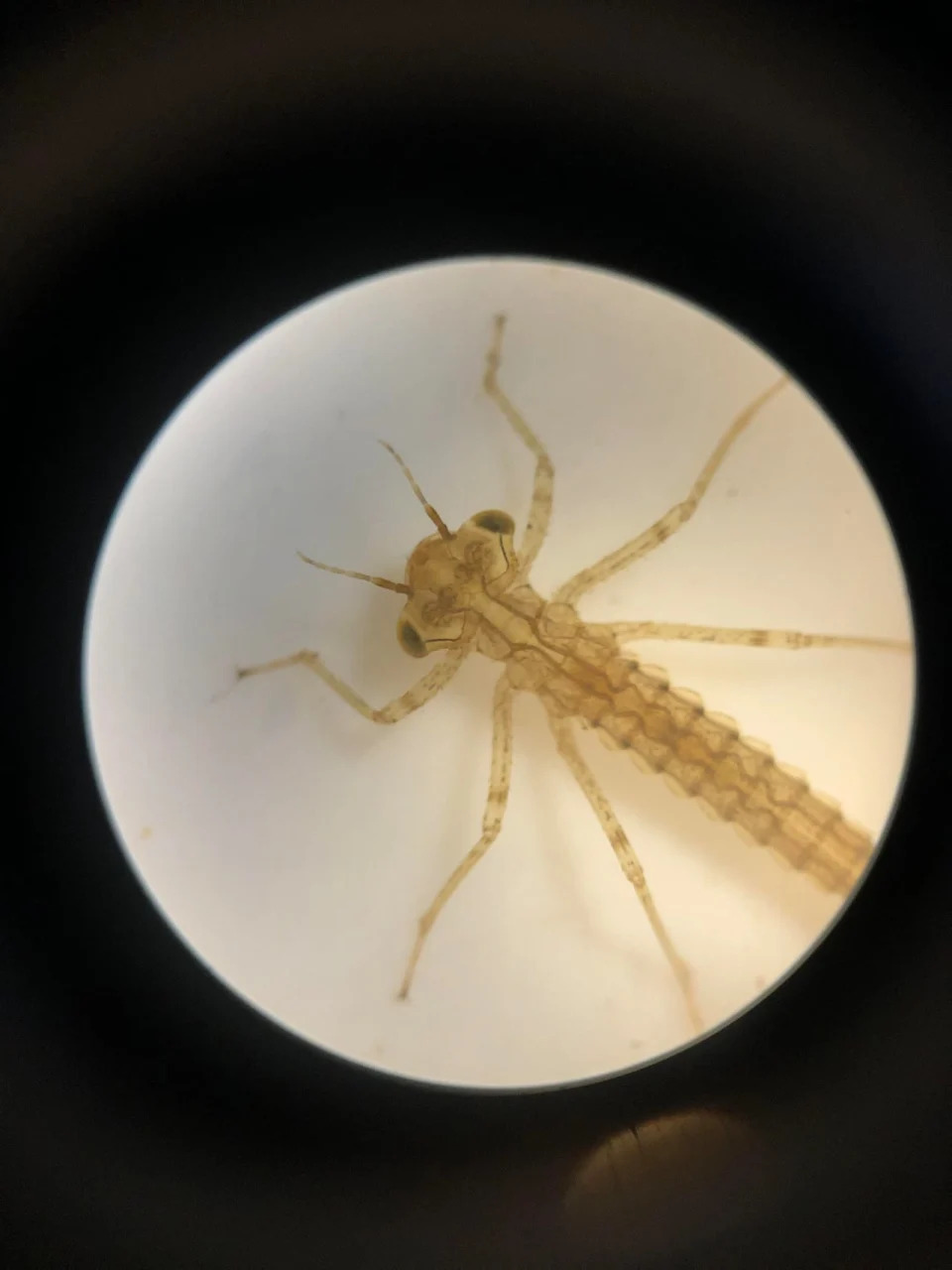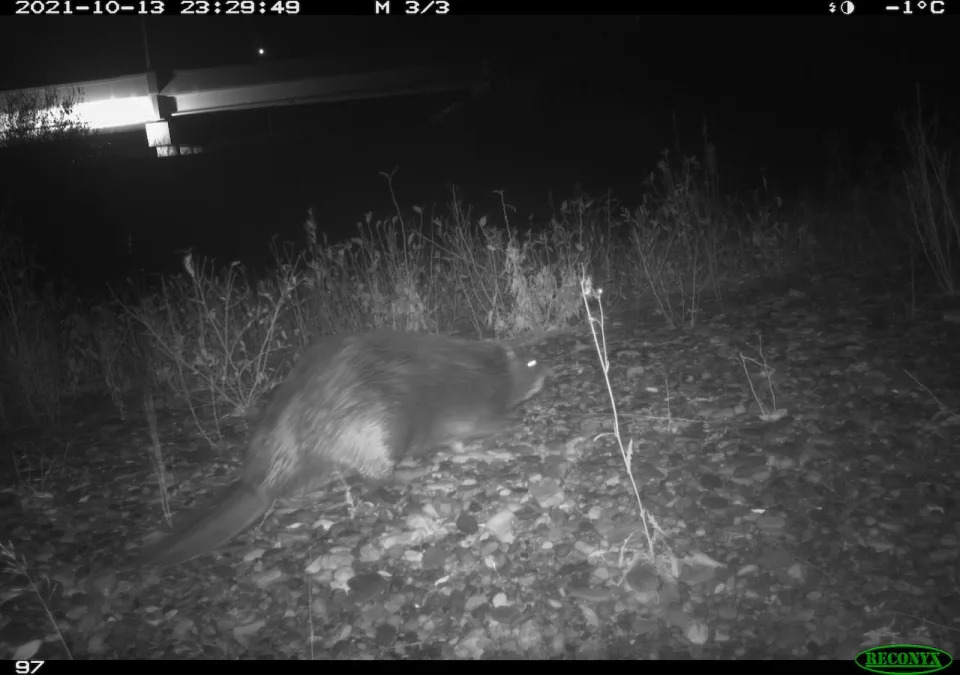Environmental group finishes 7-year study on impacts of southwest ring road
CBC
Mon, November 13, 2023

The southwest Calgary ring road wildlife underpass connects the Tsuut'ina Reserve and Weaselhead Flats. (Submitted by Lisa Dahlseide - image credit)
The Weaselhead/Glenmore Park Preservation Society has finished a seven-year study on the environmental impacts of the Southwest Calgary Ring Road.
It says effects on bird life and vulnerable species have been less severe than anticipated, but erosion control efforts are "not good enough," and it has observed five sediment spills into a beaver pond near the ring road.
The non-profit's research also suggests wildlife did not frequently use a wildlife corridor that runs along the Elbow River during road construction.
"Nobody really went into this thinking that [negative impacts] wouldn't happen," said Lisa Dahlseide, the non-profit's impact study coordinator.
"But we do recognize that there's many ways that we can do better as we move forward."
The preservation society shared key takeaways from the research at its annual general meeting on Monday and plans to release a final report next month.
CBC
Mon, November 13, 2023

The southwest Calgary ring road wildlife underpass connects the Tsuut'ina Reserve and Weaselhead Flats. (Submitted by Lisa Dahlseide - image credit)
The Weaselhead/Glenmore Park Preservation Society has finished a seven-year study on the environmental impacts of the Southwest Calgary Ring Road.
It says effects on bird life and vulnerable species have been less severe than anticipated, but erosion control efforts are "not good enough," and it has observed five sediment spills into a beaver pond near the ring road.
The non-profit's research also suggests wildlife did not frequently use a wildlife corridor that runs along the Elbow River during road construction.
"Nobody really went into this thinking that [negative impacts] wouldn't happen," said Lisa Dahlseide, the non-profit's impact study coordinator.
"But we do recognize that there's many ways that we can do better as we move forward."
The preservation society shared key takeaways from the research at its annual general meeting on Monday and plans to release a final report next month.

The Weaselhead Flats Natural Environment Park supports a range of wildlife, including smaller invertebrates.
The Weaselhead Flats Natural Environment Park supports a range of wildlife, including smaller invertebrates. (Submitted by Lisa Dahlseide.)
The southwest Calgary ring road runs between Highway 8 and Macleod Trail S.E., splitting the Tsuut'ina Reserve and Weaselhead Flats.
Major construction started in 2017 and the ring road fully opened to traffic in the fall of 2021.
The Weaselhead/Glenmore Park Preservation Society began monitoring wildlife and vegetation in the area in 2006 after the project was proposed.
"It's actually a very unique study because unfortunately, globally, there's very few road studies that have baseline data," said Dahlseide.
Several bird species listed as sensitive or threatened in Alberta, including the common yellowthroat, sora and bank swallow, went undetected in the non-profit's bird surveys during road construction, but have reappeared in recent years.
Pileated woodpeckers, olive-sided flycatchers and least weasels all lost habitat due to road construction, but can still access "good quality" habitat on either side of the road, according to the society.
"We're glad to see that they haven't been as affected as we had expected … We hope that they can adapt and persist," said Dahlseide.
Noise levels in the park have also spiked, with the group's data indicating average sound pressure decibels climbed approximately 55 per cent from 2016 to 2022 — a change Dahlseide said could impact wildlife going forward.
Researchers at the Miistakis Institute are using movement-triggered cameras to monitor medium and large mammals entering and leaving the park through the wildlife corridor underpass, under the ring road.
They've captured images of beaver, moose, coyote, cougar, mule deer and white-tailed deer.

A beaver spotted by wildlife cameras near the Southwest Ring Road bridge.
A beaver spotted by wildlife cameras near the Southwest Calgary Ring Road bridge. (Submitted by the Miistakis Institute )
The institute's director,Tracy Lee, expects more wildlife will use the corridor as time passes and plant life grows.
Wildlife corridors are effective, she added, and adaptive wildlife infrastructure is typically needed for large development projects.
"As we continue to expand, we have to be cognizant of how animals are moving around the landscape. It's a number one strategy for biodiversity," said Lee.
"They have to be able to get to resources that they need to live, whether that be mates or water or food. And so we have to think about that when we're designing these systems."
The Weaselhead/Glenmore Park Preservation Society says it's partnering with the City of Calgary to gather long-term data and to develop a habitat management plan for the area.
It wants the provincial government to improve erosion control and add more native vegetation along the wildlife corridor.
The provincial government has not yet responded to a request from CBC News for comment.
No comments:
Post a Comment